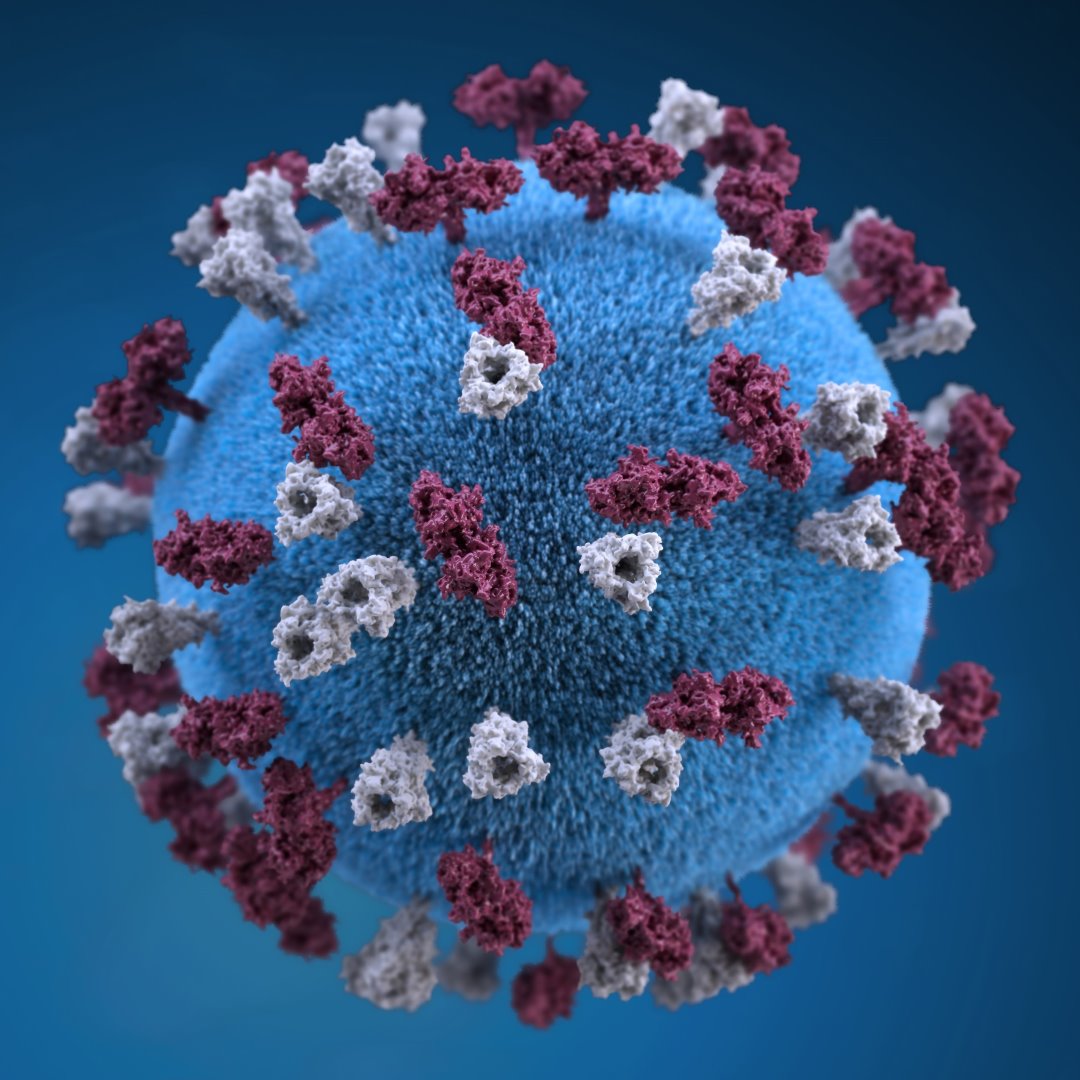The Lamen
Measles deaths grew 43 percent year-over-year in 2022

Healthcare systems are having a hard time getting vaccinations on track, as measles deaths grew nearly 50 percent year-over-year in 2022.
Photo: 3D Illustration of a Measles Virus | CDC/Public Health Image Library
Measles cases globally increased by 18 percent and deaths by 43 percent between 2021 and 2022, according to a new report from the World Health Organization and the Centers for Disease Control and Prevention. Total deaths were estimated to be 136,000, mostly in children — a result of struggling vaccine coverage after the pandemic.
The disease spreads when people cough, sneeze, or talk — remaining active in the air for up to 2 hours, and infecting people if they breathe in the virus or rub their eyes or nose after touching a contaminated surface. Measles symptoms can include high fever and the “three Cs”: cough, coryza (runny nose), and conjunctivitis.
The condition can be especially serious in children, who are at risk of severe complications, including pneumonia, bronchitis, and brain swelling.
What’s happening: The pandemic threatened progress against eliminating measles, as more than 22 million infants missed their first dose of the measles vaccine in 2020.
- Coverage of the first dose peaked at 86 percent in 2019 but declined to 84 percent the next year during the COVID-19 pandemic.
- There was a “modest” improvement in vaccine mobilization last year, but 22 million kids missed their first dose and 11 million their second.
The greatest impact is being felt in poorer countries, having vaccination rates at only 66 percent. Of the unvaccinated children, over half live in just 10 countries including Brazil, Nigeria, and India.
- Thirty-seven countries, of which 28 were in Africa, experienced “large or disruptive” measles outbreaks in 2022 compared to 22 countries last year.
- As many as 1 in 20 children with measles gets pneumonia, the most common cause of death in young children from measles. Additionally, nearly 1-3 in every 1000 die from respiratory or brain-related complications.
- While measles vaccination prevented an estimated 31.7 million deaths between 2000 and 2020, vaccination coverage is still under the 95 percent required to prevent community-wide outbreaks.
“The lack of recovery in measles vaccine coverage in low-income countries following the pandemic is an alarm bell for action,” said Kate O’Brien, WHO Director of Immunization.
Increased measles outbreaks are “not unexpected”
The CDC estimates that two doses of the measles (MMR) vaccine are about 97 percent effective at preventing the disease. The first dose is usually given to children between 12 to 15 months, with the second dose between 4 to 6 years. The increase in measles outbreaks, however, is “not unexpected given the declining vaccination rates we’ve seen in the past few years,” said the director of CDC’s Global Immunization Division, John Vertefeuille.
The rise in cases is a side-effect of the pandemic: resulting in vaccination drives being pushed to the sidelines as COVID-19 vaccines became the domain of concern. Misinformation about the safety and efficacy of these vaccines fueled hesitancy, as a widespread anti-vax movement took over social media. At the same time, lower-income countries suffer from weaker healthcare systems and inadequate funding — all issues exacerbated by the toll of the pandemic.
A survey from last year found that 3 in 10 parents believed that they should be able to decide to not vaccinate their children even if it had negative health consequences. Given reasons to opt out of vaccines, American parents inadvertently had their children fall victim to measles during the 2019 outbreak — a resurgence of measles after the virus was declared eliminated in the United States.
What’s next: According to the World Health Organization, for countries to prevent a measles outbreak from becoming an epidemic, at least 95 percent of the population needs to be vaccinated — what is called “herd immunity.”
- With the current trend, year-to-year figures for measles cases in 2023 are expected to double from 2022, WHO’s global lead for measles and rubella Natasha Crowcroft told STAT.
- Experts have also pointed out that a growing number of non-immune adults could also fuel a widespread outbreak.
A fear of vaccines over discredited theories is bound to backfire, and what matters is understanding the difference between fact and opinion.